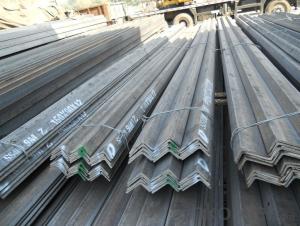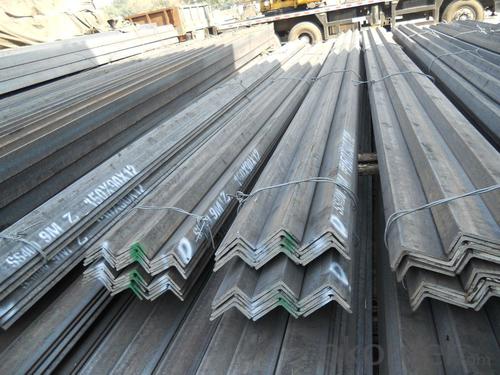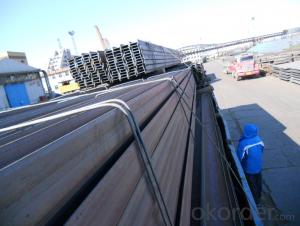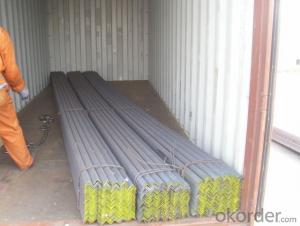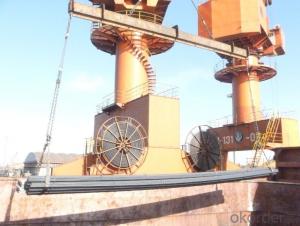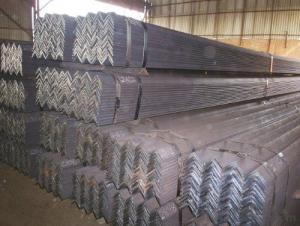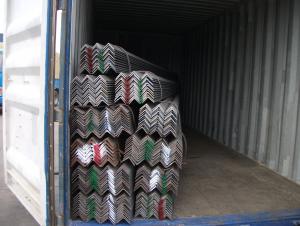High Quality cold Rolled Steel Equal Angle for Construction
- Loading Port:
- China main port
- Payment Terms:
- TT OR LC
- Min Order Qty:
- 25000 m.t.
- Supply Capability:
- 2000000 m.t./month
OKorder Service Pledge
OKorder Financial Service
You Might Also Like
Specification
Product Description:
OKorder is offeringHigh Quality cold Rolled Steel Equal Angle for Construction at great prices with worldwide shipping. Our supplier is a world-class manufacturer of steel, with our products utilized the world over. OKorder annually supplies products to European, North American and Asian markets. We provide quotations within 24 hours of receiving an inquiry and guarantee competitive prices.
Product Applications:
High Quality cold Rolled Steel Equal Angle for Construction are ideal for structural applications and are widely used in the construction of buildings and bridges, and the manufacturing, petrochemical, and transportation industries.
Product Advantages:
OKorder's High Quality cold Rolled Steel Equal Angle for Construction are durable, strong, and resist corrosion. They are newly produeced by good materiales.
Main Product Features:
· Premium quality
· Prompt delivery & seaworthy packing (30 days after receiving deposit)
· Corrosion resistance
· Can be recycled and reused
· Mill test certification
· Professional Service
· Competitive pricing
Product Specifications:
Specifications of High Quality cold Rolled Steel Equal Angle for Construction
1. Invoicing on theoretical weight or actual weight as customer request
2. Length: 6m, 9m, 12m as following table
3. Sizes
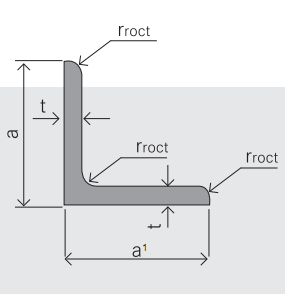
Sizes: 25mm-250mm | ||
a*t | ||
25*2.5-4.0 | 70*6.0-9.0 | 130*9.0-15 |
30*2.5-6.6 | 75*6.0-9.0 | 140*10-14 |
36*3.0-5.0 | 80*5.0-10 | 150*10-20 |
38*2.3-6.0 | 90*7.0-10 | 160*10-16 |
40*3.0-5.0 | 100*6.0-12 | 175*12-15 |
45*4.0-6.0 | 110*8.0-10 | 180*12-18 |
50*4.0-6.0 | 120*6.0-15 | 200*14-25 |
60*4.0-8.0 | 125*8.0-14 | 250*25 |
5. Payment terms:
1).100% irrevocable L/C at sight.
2).30% T/T prepaid and the balance against the copy of B/L.
3).30% T/T prepaid and the balance against L/C
6.Material details:
Alloy No | Grade | Element (%) | |||||
C | Mn | S | P | Si | |||
Q235 | B | 0.12—0.20 | 0.3—0.7 | ≤0.045 | ≤0.045 | ≤0.3 | |
Alloy No | Grade | Yielding strength point( Mpa) | |||||
Thickness (mm) | |||||||
≤16 | >16--40 | >40--60 | >60--100 | ||||
≥ | |||||||
Q235 | B | 235 | 225 | 215 | 205 | ||
Alloy No | Grade | Tensile strength (Mpa) | Elongation after fracture (%) | ||||
Thickness (mm) | |||||||
≤16 | >16--40 | >40--60 | >60--100 | ||||
≥ | |||||||
Q235 | B | 375--500 | 26 | 25 | 24 | 23 | |
Usage & Applications of High Quality cold Rolled Steel Equal Angle for Construction
According to the needs of different structures, Angle can compose to different force support component, and also can be the connections between components. It is widely used in various building structures and engineering structures such as roof beams, bridges, transmission towers, hoisting machinery and transport machinery, ships, industrial furnaces, reaction tower, container frame and warehouse etc.
Packaging & Delivery ofHigh Quality cold Rolled Steel Equal Angle for Construction
1. Packing: it is nude packed in bundles by steel wire rod
2. Bundle weight: not more than 3.5MT for bulk vessel; less than 3 MT for container load
3. Marks:
Color marking: There will be color marking on both end of the bundle for the cargo delivered by bulk vessel. That makes it easily to distinguish at the destination port.
Tag mark: there will be tag mark tied up on the bundles. The information usually including supplier logo and name, product name, made in China, shipping marks and other information request by the customer.
If loading by container the marking is not needed, but we will prepare it as customer request.
Production flow of High Quality cold Rolled Steel Equal Angle for Construction
Material prepare (billet) —heat up—rough rolling—precision rolling—cooling—packing—storage and transportation
FAQ:
Q1: Why buy Materials & Equipment from OKorder.com?
A1: All products offered byOKorder.com are carefully selected from China's most reliable manufacturing enterprises. Through its ISO certifications, OKorder.com adheres to the highest standards and a commitment to supply chain safety and customer satisfaction.
Q2: How do we guarantee the quality of our products?
A2: We have established an advanced quality management system which conducts strict quality tests at every step, from raw materials to the final product. At the same time, we provide extensive follow-up service assurances as required.
Q3: How soon can we receive the product after purchase?
A3: Within three days of placing an order, we will begin production. The specific shipping date is dependent upon international and government factors, but is typically 7 to 10 workdays.
Images:
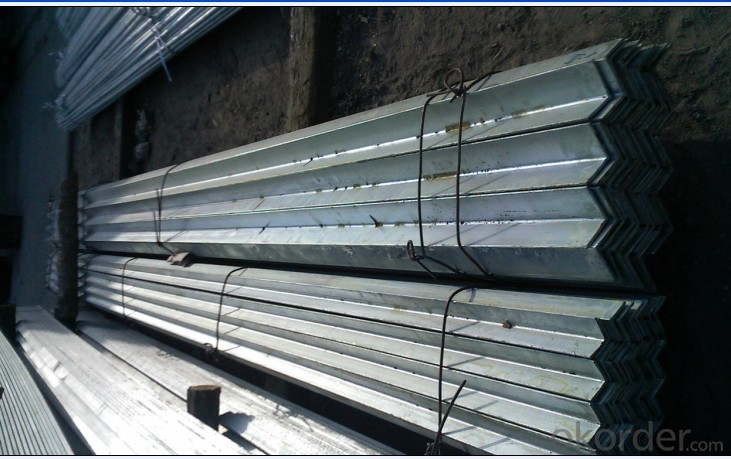
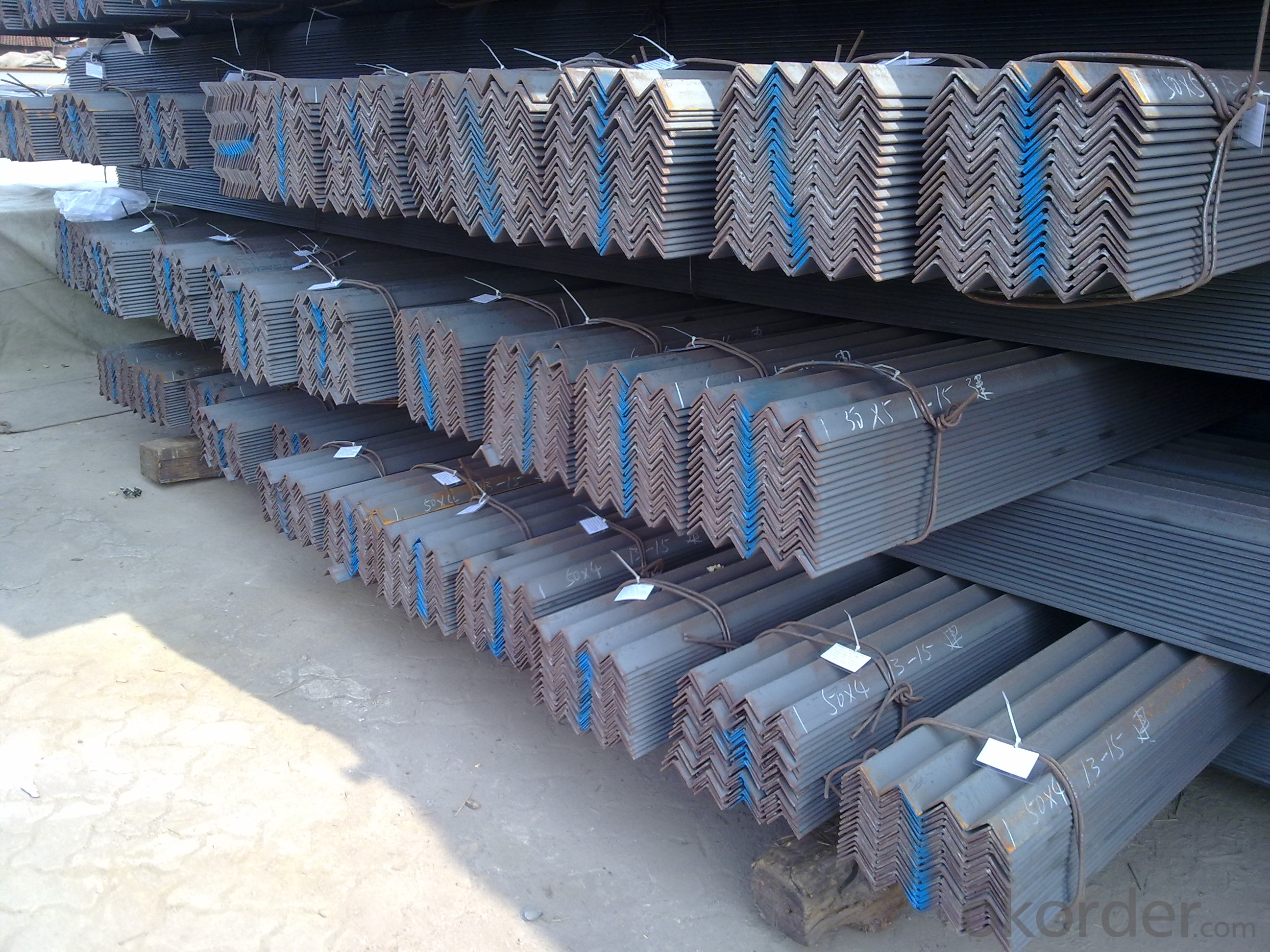
- Q: What are the different types of connections used for steel angles in industrial settings?
- There are various types of connections used for steel angles in industrial settings, including bolted connections, welded connections, and riveted connections. These connections provide structural support and stability to steel angles, ensuring their integrity and strength in industrial applications.
- Q: Can steel angles be used for handrail supports?
- Indeed, handrail supports can utilize steel angles. In the realm of construction, steel angles are frequently employed to furnish structural support and ensure stability. These L-shaped steel components possess remarkable strength and durability. Once carefully installed and firmly fastened, steel angles can proficiently uphold handrails, furnishing a robust framework for individuals to lean on or grasp whilst ascending stairs or traversing elevated surfaces. The selection of steel angles for handrail supports hinges on considerations such as the desired load capacity, design specifications, and adherence to local building codes.
- Q: How do you determine the plastic section modulus of a steel angle?
- To determine the plastic section modulus of a steel angle, you need to follow a specific calculation process. The plastic section modulus (Z) is a measure of the ability of a cross-section to resist plastic bending. It is commonly used in structural engineering to analyze the strength and stability of members. To calculate the plastic section modulus of a steel angle, you need to know the dimensions of the angle cross-section, including the length of the legs and the thickness of the steel. Once you have these measurements, you can follow the steps below: 1. Identify the centroid of the angle cross-section: The centroid is the geometric center of the shape and is an important reference point for calculating the plastic section modulus. You can determine the centroid by finding the average of the coordinates of the vertices. 2. Calculate the moment of inertia (I): The moment of inertia is a measure of how the area is distributed around the centroid. It can be found by summing the individual moments of inertia for each component of the cross-section. For a steel angle, the moment of inertia can be calculated using standard formulas or tables. 3. Determine the plastic section modulus (Z): The plastic section modulus is directly related to the moment of inertia. It can be calculated by dividing the moment of inertia (I) by the distance from the centroid to the outermost fiber of the section. This distance is known as the distance to the extreme fiber (c) and is usually equal to half the thickness of the angle. The formula to calculate the plastic section modulus (Z) is Z = I / c. 4. Substitute the values: Once you have determined the moment of inertia (I) and the distance to the extreme fiber (c), plug these values into the formula to calculate the plastic section modulus (Z). By following these steps, you can determine the plastic section modulus of a steel angle. The plastic section modulus is a critical parameter in assessing the structural behavior and design of steel angles, especially when subjected to bending loads.
- Q: How are steel angles installed?
- Steel angles are typically installed using a few simple steps. First, you will need to mark the desired location for the angle on the surface or structure where it will be installed. Next, using a level and measuring tape, ensure that the angle is aligned correctly and mark the positions for the screw or bolt holes. Once the markings are made, you will need to pre-drill the holes using a drill bit that is slightly smaller than the diameter of the screws or bolts you will be using. This will prevent the steel angle from cracking or splitting during installation. After pre-drilling the holes, place the steel angle back in position and align the holes with the markings on the surface. Use a wrench or screwdriver to tighten the screws or bolts securely, making sure the angle is firmly attached. It is important to follow the manufacturer's instructions and recommendations for the specific type and size of steel angle being installed. Additionally, ensure that the surface or structure where the angle is being installed is able to support the weight and load that will be applied to it. Overall, steel angles are relatively simple to install and provide excellent structural support in various applications such as construction, manufacturing, and DIY projects.
- Q: What are the different types of corrosion protection coatings for steel angles?
- There are several types of corrosion protection coatings available for steel angles. These include galvanized coatings, which involve applying a layer of zinc to the surface of the steel to provide a barrier against corrosion; epoxy coatings, which are a type of paint that forms a protective layer on the steel surface; and powder coatings, which involve applying a dry powder to the steel and then curing it with heat to create a protective layer. Additionally, there are also organic coatings, such as acrylic or polyurethane, that provide corrosion protection for steel angles. The choice of coating depends on factors such as the environment in which the steel angles will be used and the desired level of protection.
- Q: How do you calculate the bending stress in a steel angle?
- To calculate the bending stress in a steel angle, you can use the formula σ = (M * c) / I, where σ is the bending stress, M is the bending moment, c is the distance from the centroid to the extreme fiber, and I is the moment of inertia.
- Q: How are steel angles protected against UV degradation?
- Various methods can be employed to protect steel angles from UV degradation. Applying a protective coating or paint onto the surface of the steel angles is a common approach. These coatings typically contain UV inhibitors that shield against the harmful effects of ultraviolet rays. By absorbing or reflecting the UV radiation, the inhibitors reduce the potential for degradation. Another method is to galvanize the steel angles by coating them with a layer of zinc. This not only provides corrosion resistance but also offers some protection against UV radiation. Zinc possesses natural UV-blocking properties, which aid in minimizing the effects of UV degradation. In addition to coatings and galvanization, utilizing weather-resistant materials during the manufacturing process is another technique. These materials are specifically designed to withstand UV exposure and effectively safeguard the steel from degradation over time. Regular maintenance and inspections are essential to ensure ongoing protection against UV degradation. This includes cleaning the steel angles to remove dirt and debris that may trap moisture and hasten degradation. Periodic reapplication of coatings or touch-ups should also be performed to ensure long-term protection against UV radiation. In conclusion, a combination of protective coatings, galvanization, the use of weather-resistant materials, and proper maintenance can effectively protect steel angles from UV degradation.
- Q: What are the different types of steel angles used in staircases?
- There are mainly two types of steel angles used in staircases: the L-shaped angle and the T-shaped angle. The L-shaped angle is commonly used for the construction of the stair stringers, while the T-shaped angle is typically utilized for the treads and risers.
- Q: Are steel angles suitable for manufacturing equipment enclosures?
- Yes, steel angles are suitable for manufacturing equipment enclosures. Steel angles are commonly used in construction and manufacturing applications due to their strength and durability. They provide a sturdy framework for enclosing equipment and can be easily welded or bolted together to create a secure enclosure. Additionally, steel angles can be customized to fit specific dimensions and can be easily modified or extended if needed. Overall, steel angles offer a reliable and cost-effective solution for manufacturing equipment enclosures.
- Q: What is the maximum slope for a steel angle?
- The maximum slope for a steel angle depends on various factors such as the size, shape, and thickness of the angle. However, in general, steel angles are designed to withstand vertical loads and provide stability in structural applications. Therefore, the maximum slope for a steel angle is typically limited to angles less than 45 degrees. Going beyond this angle may compromise the structural integrity of the angle and increase the risk of failure. It is important to consult engineering codes, standards, and specifications to determine the specific maximum slope for a particular steel angle in a given application.
Send your message to us
High Quality cold Rolled Steel Equal Angle for Construction
- Loading Port:
- China main port
- Payment Terms:
- TT OR LC
- Min Order Qty:
- 25000 m.t.
- Supply Capability:
- 2000000 m.t./month
OKorder Service Pledge
OKorder Financial Service
Similar products
Hot products
Hot Searches
Related keywords
